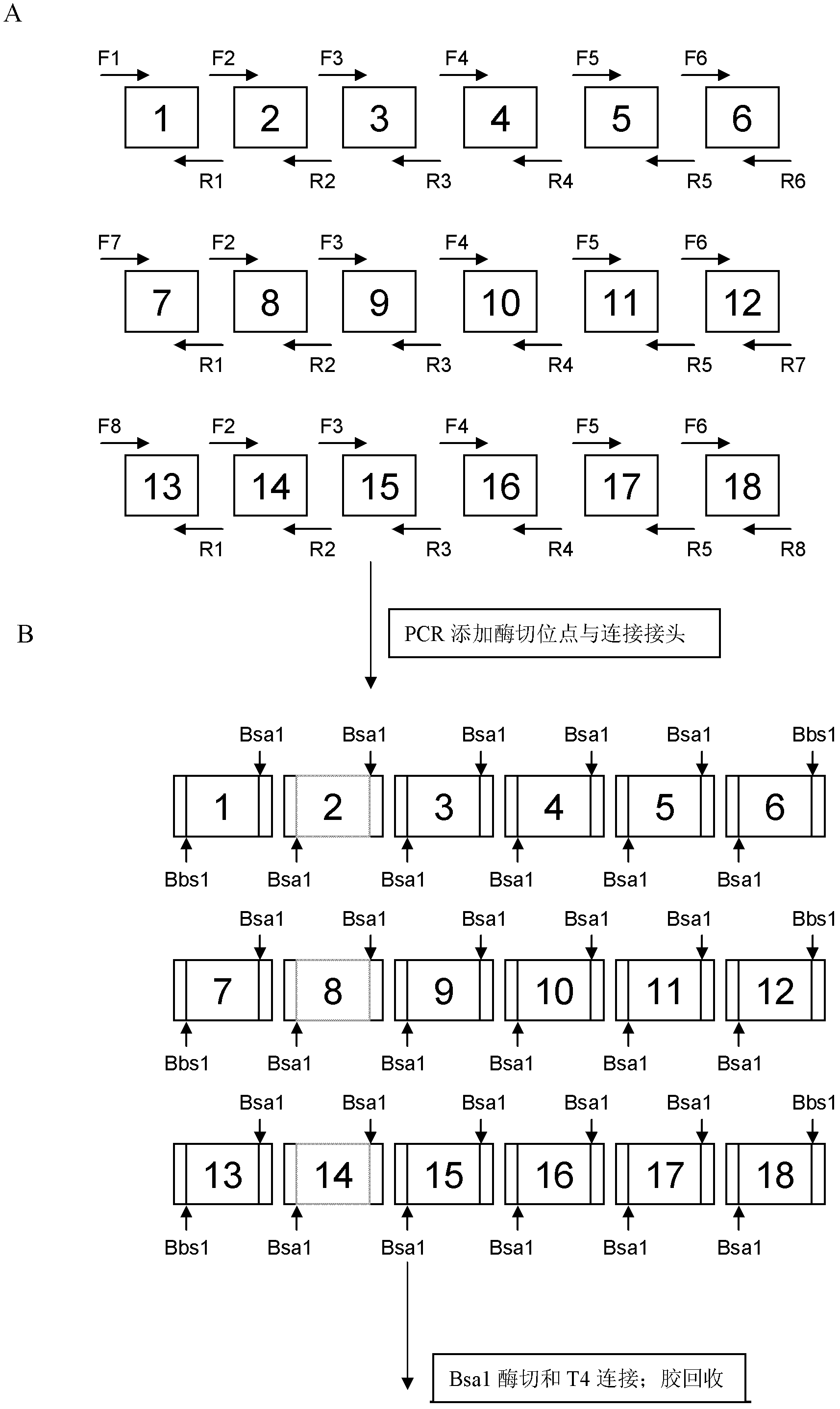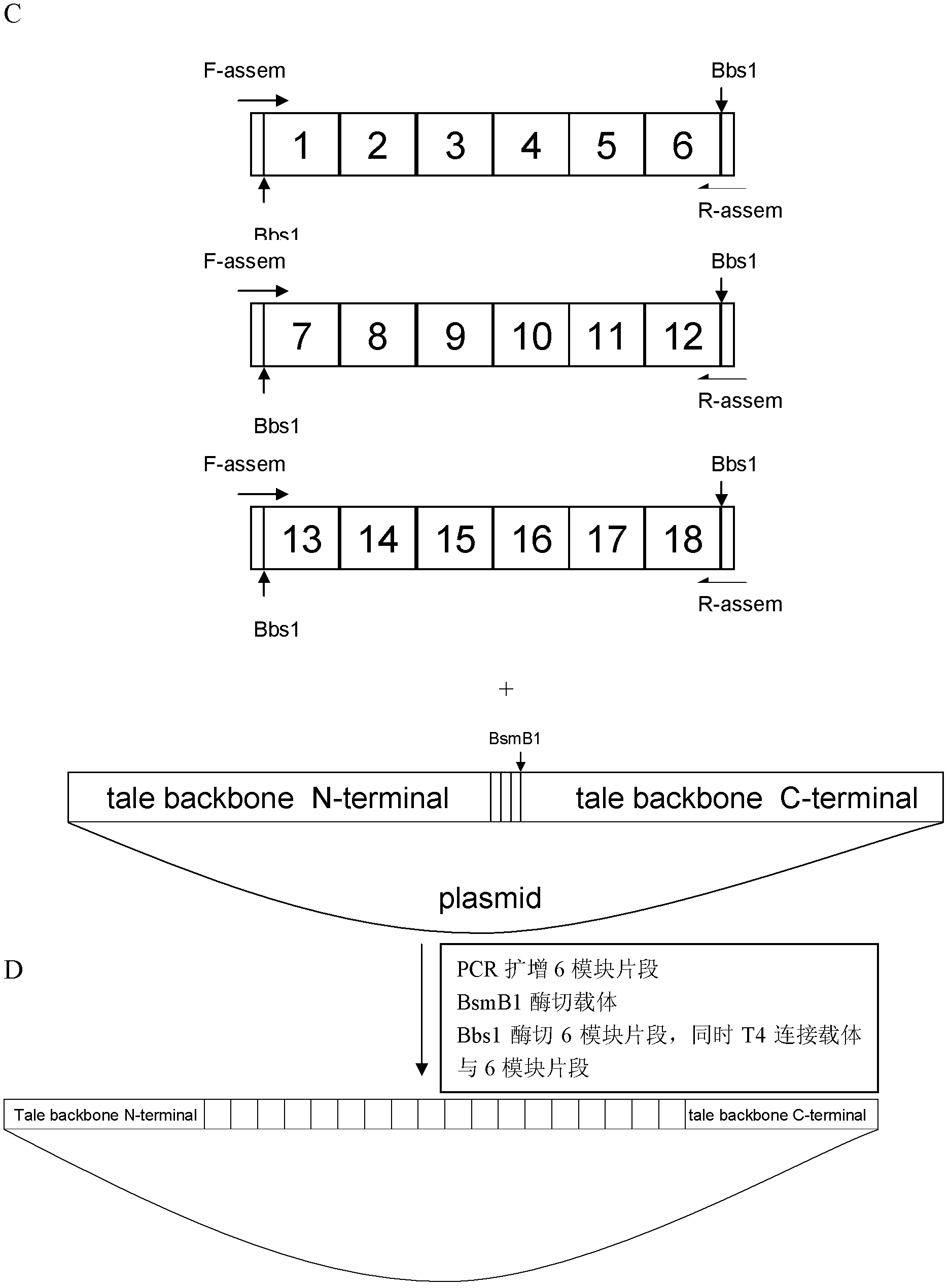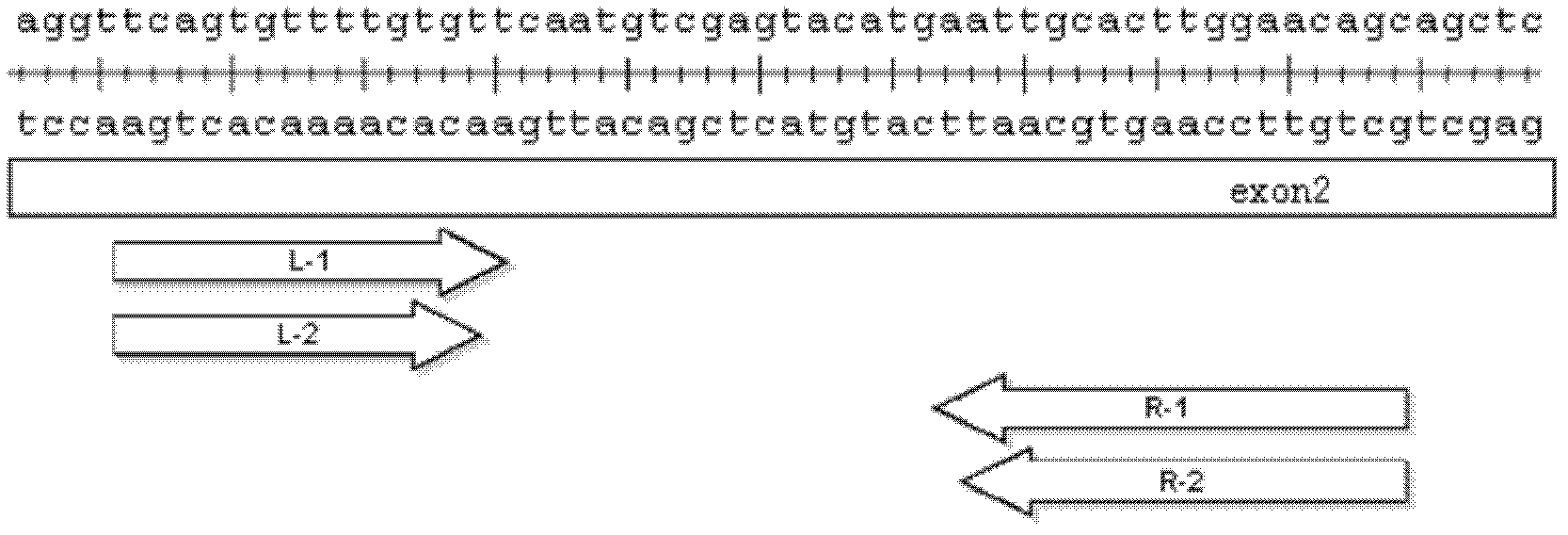A pair of short peptides, proteins and polynucleotides, host cells and applications thereof
A polynucleotide, host cell technology, applied in the field of genetic engineering, can solve the problem of human IL2RG gene targeting and other problems
- Summary
- Abstract
- Description
- Claims
- Application Information
AI Technical Summary
Problems solved by technology
Method used
Image
Examples
Embodiment 1
[0071] The design of embodiment 1 TALENs module sequence
[0072] 1. NCBI downloaded the genome sequence of human IL2RG (No. NC_000023.10), and selected exon2 as the target.
[0073] 2. Design primers and PCR amplify the target site fragments on the genome, and sequence them.
[0074] The design of PCR primers and sequencing primers is shown in Table 1
[0075]
[0076] Table 1
[0077] 3. Design TALENs recognition sequence
[0078] Determine the TALENs recognition sequence based on the sequence obtained by sequencing and the following principles
[0079] 1) The base at position 0 is T (referring to the base preceding the first position of the recognition sequence)
[0080] 2) The last base is T
[0081] 3) The length of the recognition sequence is between 14-19
[0082] 4) The length of the spacer sequence between the two recognition sequences is controlled between 12-21, preferably between 14-21, and the position of the designed target sequence is as follows fi...
Embodiment 2
[0085] Example 2 Connection between TALENs recognition modules and construction of recombinant vector
[0086] 1. Obtaining the identification module
[0087] Synthesis of four recognition modules NI, NG, HD, and NK sequences (SEQ ID NO: 14-17) that recognize bases A, T, C, and G are shown in Table 3
[0088]
[0089] table 3
[0090] ●Connect the four fragments into the pEASY-B vector (purchased from Beijing Quanshijin Company), the connection method is as follows:
[0091] 1) Take 3 μl of PCR primers
[0092] 2) Add 1μl pEASY-B vector
[0093] 3) 25°C, 7min
[0094] 4) Transfect DH5α competent cells, spread kanamycin plate
[0095] 5) Pick clones, extract plasmids in small quantities, digest, and sequence
[0096] Finally, the recognition templates NI, NG, HD and NK connected to the vector pEASY-B were obtained
[0097] 2. Identify connections between modules
[0098] ●Connection strategy
[0099] Take the connection of 19 recognition modules as an example to ...
Embodiment 3
[0172] The transfection of embodiment 3 plasmids
[0173] 1. Add 300 μl of gelatin to each space of the 6-well plate, shake it back and forth, so that the gelatin covers the bottom of the entire well, and place it in 5% CO 2 10 minutes in the incubator.
[0174] 2. Aspirate the culture medium in the T25 bottle of cultured 293T cells, wash it once with PBS, add 1ml of 0.25% trypsin, shake back and forth to make it evenly cover the bottom of the bottle, and place in 5% CO 2 5 minutes in the incubator.
[0175] ●After digestion, add 1ml 10% DMEM to neutralize trypsin, transfer the digested cells to a 15ml centrifuge tube, count the cells, and centrifuge at 1200rpm for 5 minutes.
[0176] ●Use an appropriate amount of 10% DMEM to resuspend the cells, take 2 million 293T cells and place them in a 6-well plate covered with gelatin, and add 2ml of fresh 10% DMEM.
[0177] ●Transfect when the density of 293T cells reaches 80-90%, no need to change the medium.
[0178] ●The const...
PUM
 Login to View More
Login to View More Abstract
Description
Claims
Application Information
 Login to View More
Login to View More - R&D
- Intellectual Property
- Life Sciences
- Materials
- Tech Scout
- Unparalleled Data Quality
- Higher Quality Content
- 60% Fewer Hallucinations
Browse by: Latest US Patents, China's latest patents, Technical Efficacy Thesaurus, Application Domain, Technology Topic, Popular Technical Reports.
© 2025 PatSnap. All rights reserved.Legal|Privacy policy|Modern Slavery Act Transparency Statement|Sitemap|About US| Contact US: help@patsnap.com



